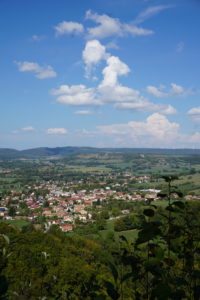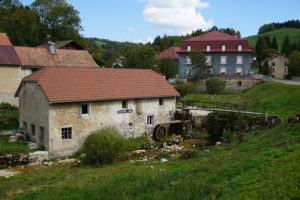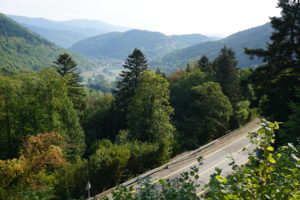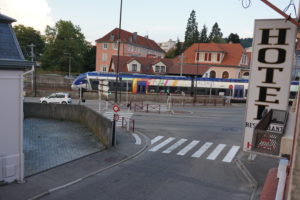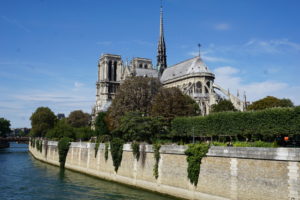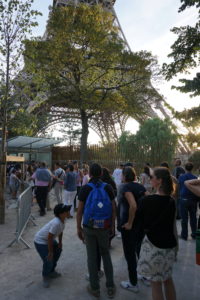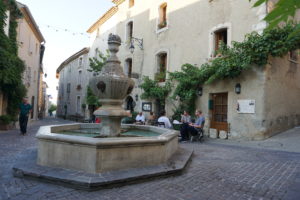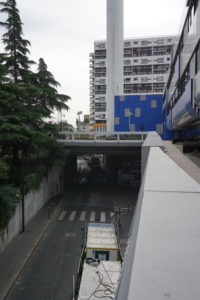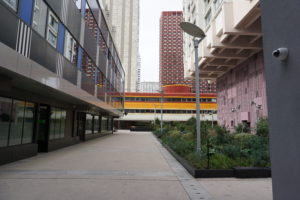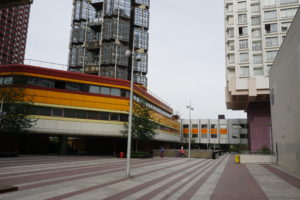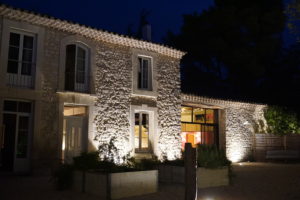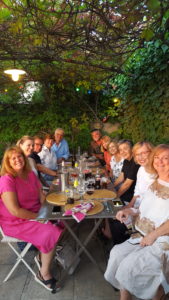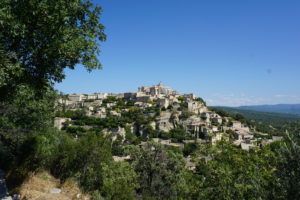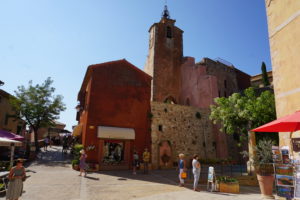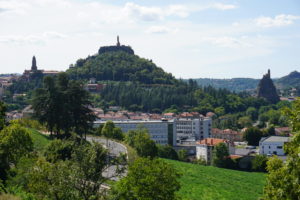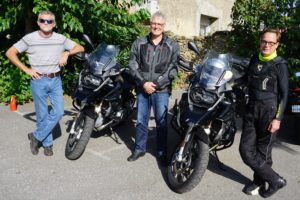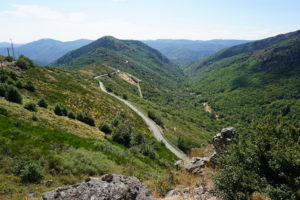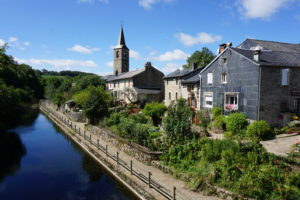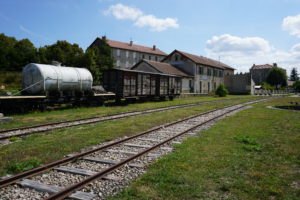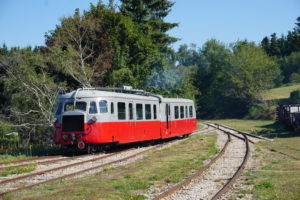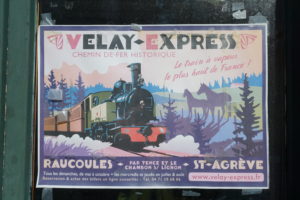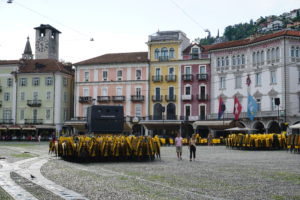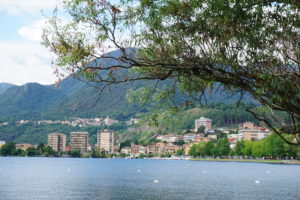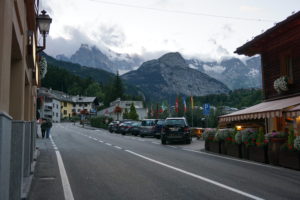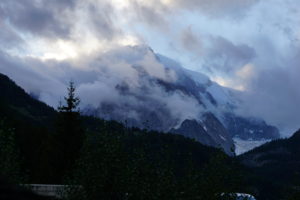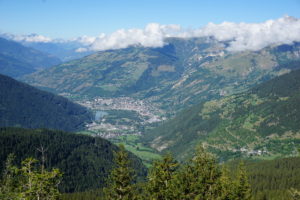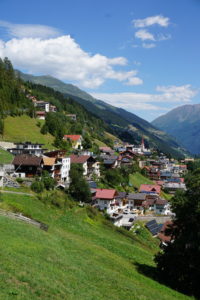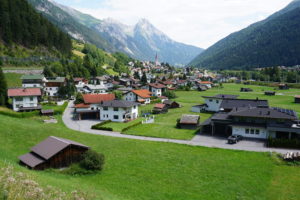October 15: I have been home almost a month now, and some random thoughts from the trip stand out in my memory:
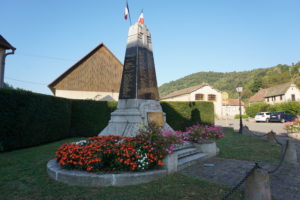 In 2015 I began my journey in Albert, close to the First World War battlefields. Visiting the site of those battles, and seeing the cemeteries devoted to those that had fallen there made a huge impression on me. Until that point, the killing and the scale of the slaughter had been abstract. Since then, in virtually every town I have visited in France, I have found a memorial to those killed during that war. It is sobering to see the number of names – often with the family name repeated – to understand the impact that loss must have had on the town. For example, this is a marker in Liepvre in Alsace, an area heavily impacted by the war. There are almost 40 names inscribed as victims of the first war. In 2015, the population of the town was about 1700 people. If that was the case during the war, the loss of so many sons and brothers and fathers in a town that size represents a whole demographic lost to a senseless slaughter. It is staggering and repeated across the country.
In 2015 I began my journey in Albert, close to the First World War battlefields. Visiting the site of those battles, and seeing the cemeteries devoted to those that had fallen there made a huge impression on me. Until that point, the killing and the scale of the slaughter had been abstract. Since then, in virtually every town I have visited in France, I have found a memorial to those killed during that war. It is sobering to see the number of names – often with the family name repeated – to understand the impact that loss must have had on the town. For example, this is a marker in Liepvre in Alsace, an area heavily impacted by the war. There are almost 40 names inscribed as victims of the first war. In 2015, the population of the town was about 1700 people. If that was the case during the war, the loss of so many sons and brothers and fathers in a town that size represents a whole demographic lost to a senseless slaughter. It is staggering and repeated across the country.
* * * * *
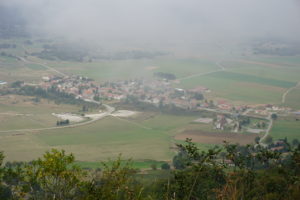 On a lighter note: I often came upon camper vans trundling down some winding back road, usually at the head of a long line of cars and trucks trying to find a place to pass. In most cases, they were driven by middle-aged to slightly elderly Brits, although the Dutch seemed to be a close second. You would see camps of these things huddled together at barren campgrounds on the edge of town, as here in Vassieux-en-Vercors. Almost inevitably, the builders of these things calls them Sprinter or Gazelle or Ephemera as if these names somehow camouflage the fact that these are the lumbering, mouth-breathing cretinous relatives of real vehicles. It’s like the 300 lb guy in spandex that everyone calls Slim – it just doesn’t work.
On a lighter note: I often came upon camper vans trundling down some winding back road, usually at the head of a long line of cars and trucks trying to find a place to pass. In most cases, they were driven by middle-aged to slightly elderly Brits, although the Dutch seemed to be a close second. You would see camps of these things huddled together at barren campgrounds on the edge of town, as here in Vassieux-en-Vercors. Almost inevitably, the builders of these things calls them Sprinter or Gazelle or Ephemera as if these names somehow camouflage the fact that these are the lumbering, mouth-breathing cretinous relatives of real vehicles. It’s like the 300 lb guy in spandex that everyone calls Slim – it just doesn’t work.
* * * * *
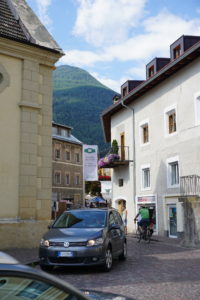 I could – and probably will at some point – go on at length about the impressive driving skill of European drivers. There is a mis-perception that most Europeans are worse drivers than North Americans. I think that is because Europeans are more assertive when driving: they drive faster and maneuver closer than we usually tolerate here. The cars are smaller but the roads are narrower, so more skill is needed. And more patience and respect. They treat pedestrians and cyclists in an exemplary fashion.
I could – and probably will at some point – go on at length about the impressive driving skill of European drivers. There is a mis-perception that most Europeans are worse drivers than North Americans. I think that is because Europeans are more assertive when driving: they drive faster and maneuver closer than we usually tolerate here. The cars are smaller but the roads are narrower, so more skill is needed. And more patience and respect. They treat pedestrians and cyclists in an exemplary fashion.
In the entire 2 months I was in Europe, I think I heard car horns – in anger – perhaps 5 times. When I came home, I started hearing horns every day. Drivers here are slow and inattentive. They do stupid and inconsiderate things and ignore the danger they place on other drivers. And I have noticed that among the worst offenders are Uber drivers. It must be a job requirement. Give me a Frenchman pretending to be Alain Prost any day.
* * * * *
